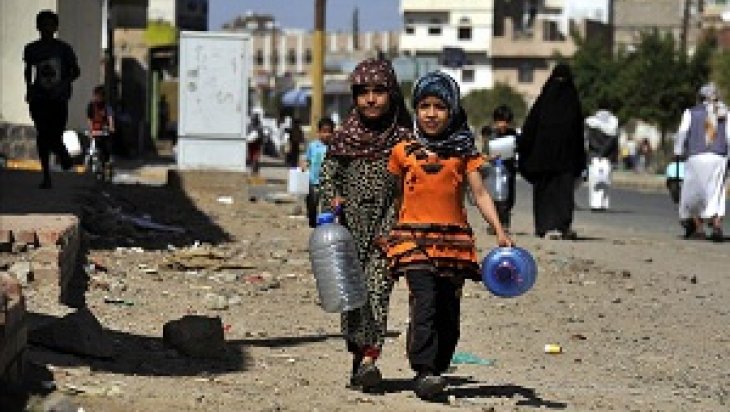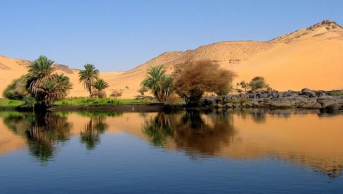The Political-economic Factors Behind Yemen’s Water Crisis

Yemen is one of the most water-scarce countries in the world. With no perennial running surface waters, the main source of water has traditionally been groundwater. Groundwater in Yemen is diminishing very rapidly in the last fifty years or so, because of a number of reasons which centered around inappropriate and shortsighted political-economic choices. Currently, Yemen’s per capita water consumptionis only 125 m3, annually; where global average stands at 2500 m3 per capita, per year. Lack of water also appears to be the biggest health challenge in the country causing malnutrition, morbidity, and mortality particularly in rural areas.
The capital city, Sanaa is expected to run out of water by next year. If this happens, it will be the first capital city in the world that runs our of water completely. Pouplation rise in the case of Sanaa should also be emphasized: Sanaa’s population in late 70s was around 55000. It reached to 2 million in early 2000s. The problem is far beyond the borders of the capital: as of today, at least half of the Yemenis (around 13 million) suffer from acute lack of water.
Starting from 1970s, the Yemeni government enacted protectionist policies that greatly raised the profitability of domestic fruit and vegetable production, particularly through a ban on fruit and vegetable imports. It was a very risky decision in a water-scarce environment. There occurred a massive expansion of cultivated land, from 37,000 to 407,000 hectares in just four decades. Apart from expansion of the lands under cultivation, farmers shifted towards more water intensive crops (higher-value as well) such as grapes, citrus, bananas and especially qat. In general, qat cultivation(the most-water-consuming crop) expanded at the expense of fruits and vegetables.
It has been elsewhere suggested that alternative water supply solutions such as wastewater reuse and desalination have brought only marginal relief to Yemen, mainly because Yemen lacks the capital, technology and financial power. As we know, both of these (wastewater reuse and desalination) are relatively expensive alternatives. In these circumstances, groundwater, as the main water source, is now being extracted at three to four times the rate of natural recharge.
One of the reasons that further aggravated excessive groundwater use is the technological advances which made diesel water pumps cheaper and thus widespread. Some of the traditional protective measures, such as hundreds-years old “harim” were set aside amid increased lucrativeness. According to harim, if there is a water well in a given point, another one can only be digged at least five hundred meters away from the existing one. Because of the cheap drilling alternative, the tradition of rainwater harvesting has also been almost forgotten.
Agriculture currenty accounts for 15% of gross domestic product and employs 75% of the rural workforce, and uses 90% of the water. This inefficient agricultural practice suggests that Yemen should focus on policies towards economic diversification which would ease the stress on diminishing water resources.
However, this is not an easy task given the lack of effective state control in large but isolated parts of the country. Distant areas in Yemen have always enjoyed some degree of autonomy. Even powerful states like the Ottoman Empire in 16th and 17th centuries were not able to exert its full control over the whole territorial mass, which did not mean much for the tributary Empire. Instead, the Ottomans chose to take and maintain the grip of significant ports and urban centers like Aden, Sanaa, or Mocha.
This traditional lack of state control also meant lack of sufficient protection of water rights. Rampant corruption in state apparatus has resulted in lack of trust to all official mechanisms of dispute settlement, such as the judiciary. In such a setting, Yemeni localities tried to take the initiative to innovate and implement customized solutions to groundwater supply and availability challenges. While this could have been seen as an ideal way of dealing with the local water problems, there are notable challenges which might render these initiatives ineffective. First of all, there are no reliable mechanisms of enforcement. These are generally voluntary initiatives which might be easily undermined by free-riders. Secondly, water problems -despite the local effects they create at the first instance- are always parts of bigger, basin-wide problems. Therefore, solutions of the local level water problems should be evaluated within a broader, more integrated framework. The local arrangements that Yemeni people establish, on the other hand, fall short of being coherent segments of integrated basin-wide strategies.
Yemen is a country which successfully averted “water crisis” for centuries, through sustainable practices. Beginning from 1970s, however, water problems got intensified because of a political-economic decisions in mainly agricultural sector. Internal war and state failure is further exacerbating the mismanagement of water as well as the water infrastructure, making it more difficult for Yemen to recover in socio-economic terms.






